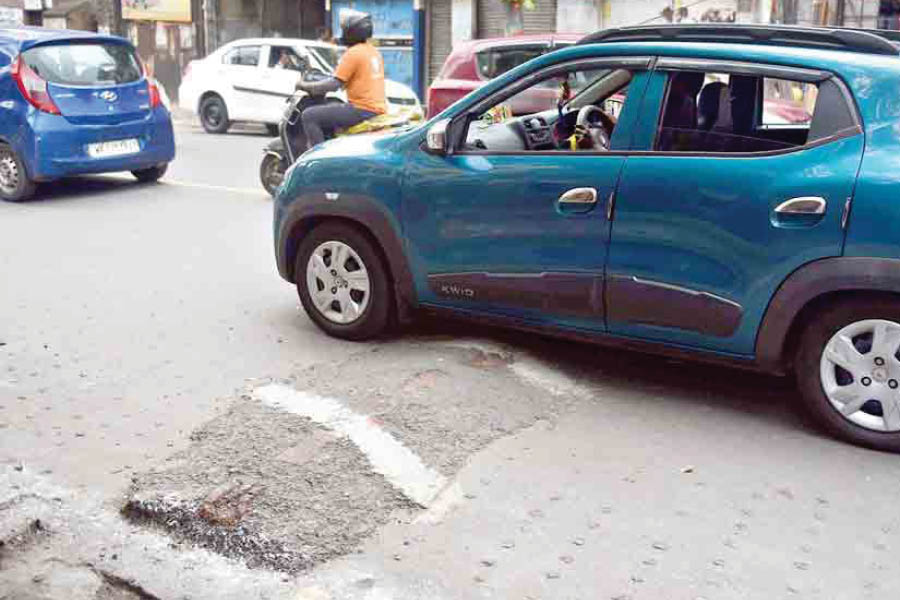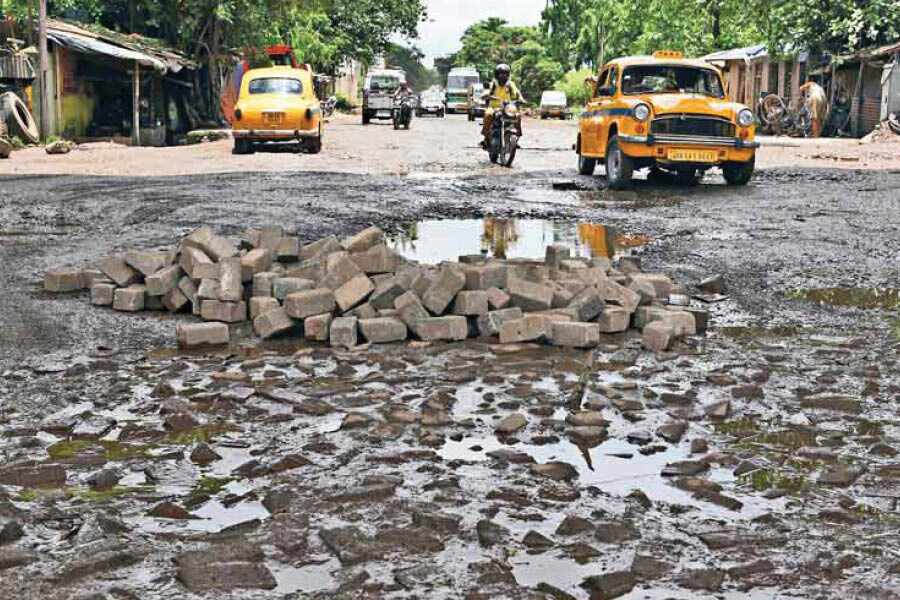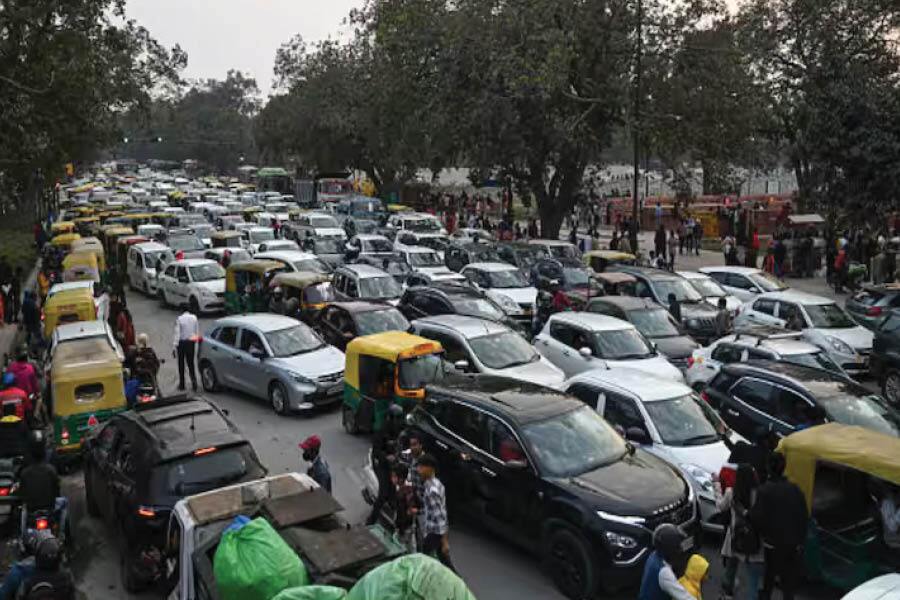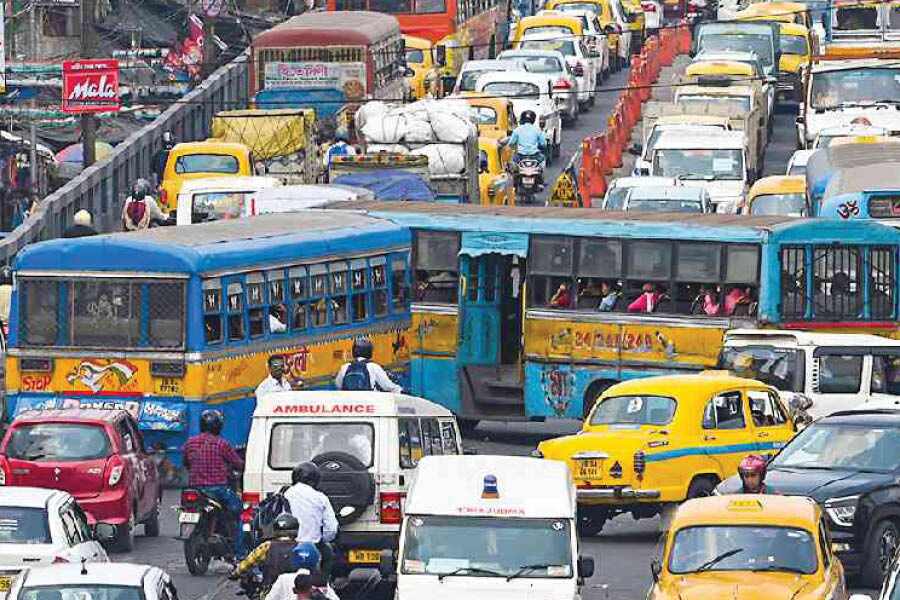Several years ago, I was enamoured of the movie My Fair Lady. The words of one song in particular stayed with me long after. Here are the first two lines: “I have often walked down this street before / But the pavement always stayed beneath my feet before”.
Walking down the streets of dear old Calcutta, amusement made me link the words to the journey. As an adolescent, I wrote about that somewhere and recall that it was largely about the ‘Kolkata Mud Digging Agency’. The pavement and much of the road in old Calcutta hardly stayed beneath my feet. Potholes, open drains, and other traps for the unwary were par for the course. But then, Calcutta improved and the potholes diminished in size and frequency, too. Calcutta became Kolkata and some of us graduated from bicycles to motorcycles, and then cars. And that’s when we realised the next two lines of the song:
“All at once am I / Several storeys high” – which brings me to the topic with a bump!
Bumps — planned and accidental

Closely clustered together, Kolkata’s bumps could even be mistaken for a hurdles course had you not known that they have another purpose TT Archives
On my regular route, travelling down a little stretch of Palm Avenue from Adi Ballygunge to Mayfair Road, one encounters no less than eight speed breakers. Call them axle breakers, suspension killers or anything you like, it is a tribute to the ups and downs of driving in the city. Closely clustered together, they could even be mistaken for a hurdles course had you not known that they have another purpose. They are all homemade and designed to ensure that all traffic slows while passing the shanties that dot the stretch. Almost at parade speed, but salute you must not, for fear of losing grip of your steering as you negotiate the KMC water tanker, multiple receptacles and people doing their power lifting with buckets.
Carpet bombing

Another brick in the wall… err, road! TT Archives
Very rarely are these bumps designed by road engineers or follow a pattern of compliance. The process is pretty simple. The road repair people arrive on a sunny day and proceed to make their tea — an absolute given under any circumstance in Kolkata. This gives the signal to the local toughs to arrive with bricks — often multi-use brickbats — which are then laid out lovingly in a line across the road. The masala mixture that is then laid down in a carpet over the road, calmly rolls over the bricks and they are now set in stone.
As a special concession to two-wheelers, there might just be a section on both sides that is left at the road level. But who really cares for six inches of road? My friend has a Harley-Davidson which is so low slung that he needs to get off and wheel his bike over the bumps. I’ve seen a Maruti 800 or two teeter-tottering on the crest of a bump. I’ve heard these bumps referred to as pahars, mountains in local parlance.
Totally accidental (no pun intended) is the actual carpeting, which is randomly spread across the road in patches with the suggestion of a road roller doing one up and down in between tea breaks. This results, as you will all bear out, in an uneven road surface that, though unintended, produces a bunch of “baby bumps” on what could otherwise have been a flat carriageway. Add to that the sudden pop-ups of sewer holes (earlier called manholes, but with gender equality the name has changed and person-holes just don’t cut it!). These metal monstrosities are usually way above the road surface in the forlorn hope that one day the carpets will catch up and we will all be level.
‘Sleeping policemen’

A regular day’s traffic on Syed Amir Ali Avenue, outside the Ice Skating Rink Wikimedia Commons
In countries less informed than ours, they call these speed breakers “sleeping policemen”. Apparently, because while the world drives, the bumps act as speed police! We Kolkatans can easily imagine one of our coppers lying down for a siesta, pockets and tummy a-bulge with lunch, doing unconscious duty on the roads. But wipe that image from your mind as you negotiate the turns and twists around the Ice Skating Rink. For some unknown reason, in the middle of the day, conscientious cops drag metal guard rails into the middle of the road to slow down the traffic. They are staggered so that three lanes become two which merge into one so that a game of Tetris gets into war mode. Cars that are turning right are stuck behind others that are hoping to move forward and all the time there’s an eye on the blinking green arrow that might suddenly disappear, thwarting their hopes. Believe me, it’s a video game in real life. And then one policeman jumps out of the bushes to hand you a challan when you make an illegal turn (*Game Over*).
Comparisons are bad

It took the author a trip to Kerala, one to Bengaluru and another one to Goa to appreciate how we have peacefully adjusted to driving in Kolkata TT Archives
Friends who visit Kolkata and have sat in the passenger seat while I drive, grit their teeth and cringe away from the door as I squeeze past people, parked bikes and pavement shops protruding into the street. They often comment on the terrors of driving, never on my skills. But it took me a trip to Kerala, one to Bengaluru and another one to Goa to appreciate how we have peacefully adjusted to driving in Kolkata. Football pitches, which stretch endlessly from one town to another, masquerading as roads, tempt one to drive with gay abandon. I’m sure my car picked up a few speed tickets as I drove from Palakkad to Alleppey to Cochin and a dozen places in between. Don’t they have bumps? They do. About a hundred metres from said bump there are huge warning signs telling you they are near. When you hit the bump, you might not notice it. A gentle rumble under the tyres alerts you to the existence of the “rumble strip”. In parts of Bengaluru, the bumps are hardly discernible as you do not travel fast enough to notice them!

In Goa, there are stretches that one could coast along peacefully; but Panjim is a motorist’s nightmare iStock
Last month, in Goa, there were stretches that one could coast along peacefully while the bumps only appeared, with sufficient warning, at crossroads and near busy townships. However, they also had the Atal Setu, which soars above the Mandovi, Panjim and a few of the busy streets, depositing you well away from the chaos of the city. Panjim, or Panaji, is a motorist’s nightmare. It shares one thing in common with old Calcutta – digging. What appears to be unplanned digging reminded me of our good old days. Cables being laid, drainage being repaired and possibly some random digging for logging MNREGA work days? Whatever it is, the city had absolutely no parking available. But parking woes can form the backbone of another story, another time. Till then let’s just fist bump and walk.
[The author drives wherever he can, encountering a few avoidable bumps in his daily commute or his visits to other cities. The views expressed in the article are solely his.]

